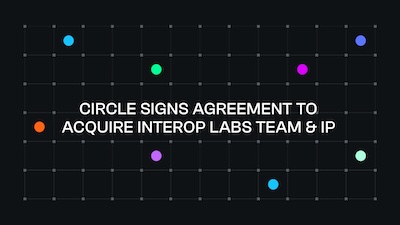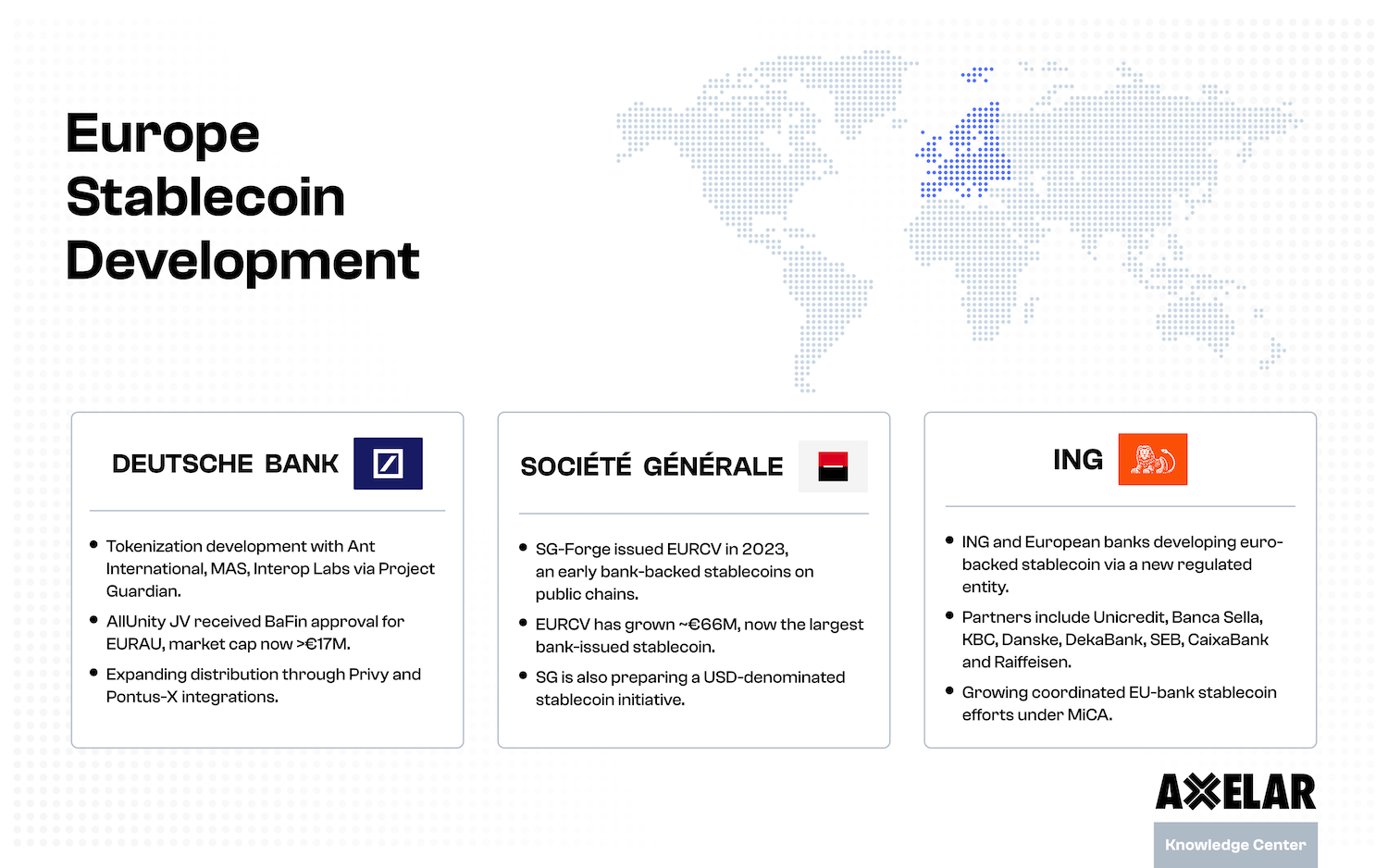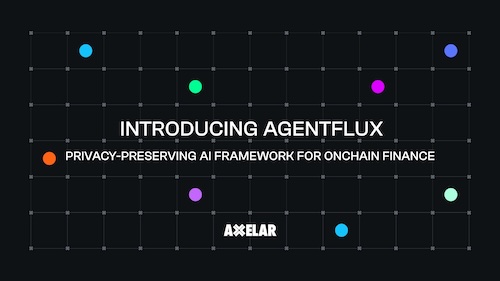Concepts for a 'Web3' Future: Defining Cross-Chain, Multichain and Interchain
Table of Contents


Interoperability is confusing
The rapidly evolving blockchain technology landscape has given rise to various new terms and concepts, such as cross-chain, multichain and the more recently coined interchain. Understanding the subtleties of these terms can inform a clearer view to the future growth and development of the Web3 ecosystem at large.
In a widely read post last year, Ethereum co-founder Vitalik Buterin stressed the importance of a multichain blockchain ecosystem and particularly noted the fundamental security limitations of cross-chain bridges, pointing out that achieving true decentralization and security in cross-chain operations remains a significant challenge.
In this post, we'll refine the concepts of cross-chain and multichain, as discussed by Buterin, and add a third term, interchain, which defines a new way of looking at blockchain interoperability that moves beyond tribalism and silo effects, establishing Web3 as a universal development environment.
Tldr
- Cross-chain: Represents any process enabling intercommunication and transactions between blockchain networks.
- Multichain: Refers to deploying decentralized applications (dApps) across multiple blockchains, resulting in multiple instances or versions of the same application in various blockchain ecosystems.
- Interchain: Describes chain-agnostic applications that treat all of Web3 as a unified development environment, incorporating logic from multiple chains and accommodating users from any chain.

Cross-chain
As a broad term, cross-chain refers to any communication between chains, including wrapped assets (bridging) and other activities. Bridging is the most common type of cross-chain application. Cross-chain bridges enable cross-chain activity by creating wrapped versions of native tokens on the target chain. In brief, a user deposits native tokens on Chain A; the bridge verifies this deposit and mints corresponding wrapped tokens on Chain B. Despite their utility, bridges have limitations, such as potential security risks and limited liquidity.
Challenges
- Security: Many bridges operate under centralized control, often managed by a multisignature wallet group. This centralized approach creates a concentrated point of failure, making the system vulnerable to attacks. For instance, the Ronin Bridge last year fell victim to an exploit that led to a loss of more than $600 million worth of ETH and USDC.
- Bad user experience: The function of cross-chain bridges in the blockchain environment often requires users to adapt to different blockchain protocols, manage intricate requests, and move to a separate user interface to bridge their assets between chains, before returning to their original dApp. Notably, in some applications, bridging has been integrated into a more seamless user experience (UX), reducing the need for users to navigate away from the dApp. This is the kind of approach we might refer to as interchain application development (see below).
Multichain
The multichain approach involves deploying dApps across multiple blockchains, allowing users to interact with an application on their preferred chain. Notable projects like Uniswap have employed this approach for broader accessibility.
Imagine a coffee chain deciding to expand globally: opening outpost locations in new countries, hiring and setting up supply chains, in order to reach new customers there. That's like a dApp starting on one blockchain, like Ethereum, and then expanding to others, adjusting to each chain's features and technical requirements to deliver a consistent product, everywhere.
Multichain deployments also present challenges:
- Consistency: Ensuring a uniform user experience and application state across different chains can be costly, given each blockchain's various architectures and functionalities.
- Liquidity & fungibility: Different chains may lead to discrepancies in liquidity, disadvantaging users on smaller platforms. Additionally, application tokens often lose fungibility between different deployments, further fragmenting liquidity. (Axelar’s recently launched Interchain Token Service (ITS) provides a solution by enabling Interchain Tokens that maintain fungibility across connected chains. This enhances the seamless transfer of assets and preserves custom functionality.)
A multichain example: Uniswap
Uniswap's expansion across multiple chains has necessitated a rigorous and comprehensive examination of different bridge protocols. Recognizing the complexity of bridge systems, the Uniswap Foundation’s Bridge Assessment Committee developed a specialized framework to evaluate six bridge protocols. It approved Axelar and Wormhole for use in cross-chain governance, i.e., pushing updates out to its multichain deployments.
Better multichain governance
Using Axelar as a programmable interoperability layer will provide Uniswap with enhanced control over its multichain deployments, enabling the secure transmission of updates cross-chain. Specifically, Uniswap noted, “Axelar employs a proof-of-stake mechanism with sound cryptoeconomic guarantees to secure the protocol.” Axelar's approach is supported by a dynamic set of 75 validators, robust security practices, and comprehensive coverage & functionality. As a result, Axelar can offer General Message Passing (GMP) to more than 45 chains, including Cosmos and EVM.
Interchain
Interchain is a term that originated in the Cosmos ecosystem, where early blockchain interoperability technology and concepts were developed. Today, Axelar uses the term to describe applications built with a chain-agnostic approach that spans all Web3 ecosystems (including, in Axelar's case, both Cosmos and EVM chains).
In a global interchain ecosystem, dApps incorporate logic from multiple blockchains, creating an inclusive platform where users from any chain are welcome. This perspective leaves behind tribalism and rigid compartmentalization of ecosystems, moving towards Web3 as a universal development environment, with a more inclusive and interconnected ecosystem.
Interchain-native applications
Interchain-native applications are designed from inception to be chain-agnostic, aiming to reach users, compose logic and network effects, and integrate assets across multiple chains. These applications don't restrict themselves to the confines of one chain; instead, they are built to take advantage of the capabilities of various chains to deliver unique features to users. Early examples of interchain-native applications include Prime Protocol, Sommelier and Squid.
For example, in earlier days of mobile development, the choice between iOS and Android platforms posed a challenge. Now, developers have the flexibility to build for both platforms using frameworks like Flutter, enabling them to incorporate unique features and applications. Axelar functions similarly to those frameworks, allowing developers to build for multiple platforms (blockchains) as though they are building for one. This is an example of how Axelar enables an interchain approach that treats Web3 as a universal development environment.
This universal development environment has significant advantages over established approaches in internet applications. Chief among these advantages is composability. The open-source nature of Web3 allows developers to compose "super apps" within the decentralized Web. Composability means developers build as with Lego bricks. This concept is familiar in open-source software – but in Web3, developers compose not only with software functions, but with composable network effects. In this way, Web3 developers interconnect the aggregate value added to various networks by their many participants, ushering in the "super app" as a superpower of the Web3 developer.
Emerging dApps, such as Squid, built on Axelar, exemplify this innovative approach. Squid composes liquidity sourced across multiple blockchain networks to enable an interchain trading experience for users: one-click cross-chain swaps. The concept of composable network effects in an interchain environment will continue to drive developers, paving the way for applications previously unimaginable on the internet as we know it today.
Axelar’s unique capabilities
Axelar distinguishes itself as a blockchain that connects blockchains. Powered by the AXL token, Axelar can run complex cross-chain logic that enables the kind of development we refer to as interchain-native. This programmability makes Axelar a full-stack interoperability layer, with unique capabilities surpassing conventional cross-chain services. Examples include Interchain Token Service, which automates the deployment and management of Interchain Tokens that preserve fungibility and custom functionality cross-chain. Axelar also supports cross-chain services like automated gas payments and one-time deposit addresses. These capabilities enable projects to build decentralized user experiences that rival even centralized exchanges for simplicity and ease of use. With Axelar, dApps may replace these centralized services as the leading onramps in the next wave of Web3 adoption.
Cross-chain programmability also enables Axelar to manage routing across all connected chains programmatically. Any new chain integrating with the Axelar network is immediately privy to the full benefits, sparking instant network effects.
Underlying many of these capabilities, Axelar General Message Passing (GMP) empowers developers to select the most suitable blockchain for their needs and execute any function on any connected chain. GMP provides secure and powerful interchain capabilities for developers and users. For more on GMP, read the blog post here.
Conclusion: Blockchain's path to transform the internet
We hope the distinction between cross-chain, multichain and interchain approaches is helpful for your view into the future of the Web3 ecosystem. Each term represents unique opportunities and challenges in the quest for enhanced decentralization.
At Axelar, full-stack interoperability, including General Message Passing (GMP), pushes the boundaries of what is possible in Web3 – including simplified onramps for mass adoption, and "super apps" that compose network effects, going beyond what's possible on the internet today.
As we look to the future, the Axelar community is energized by the opportunity to shape a blockchain landscape where composability, interoperability and security are norms and where today's complexities give way to tomorrow's innovations.


